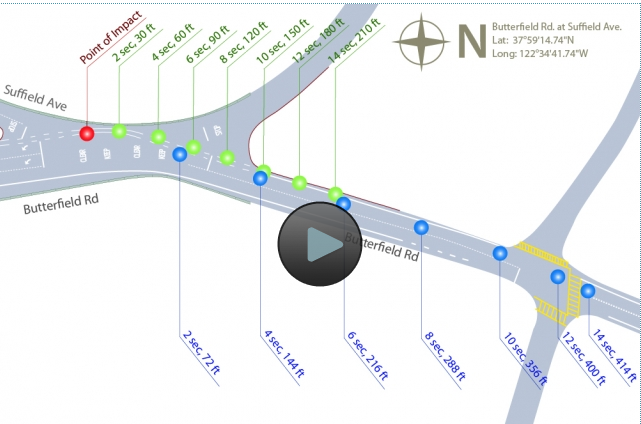 Yesterday was one of those days that reminded me of the value of visiting a site for a construction-related case to see and feel firsthand what is involved. Couldn’t I simply hire a photographer to take pictures of it for me instead? Perhaps, but that’s a poor substitute. It’s much more effective to tour the scene with the lead attorney and experts, as well as with our firm’s in-house architect to tap into his expertise about the building’s design and standard construction practices.
Yesterday was one of those days that reminded me of the value of visiting a site for a construction-related case to see and feel firsthand what is involved. Couldn’t I simply hire a photographer to take pictures of it for me instead? Perhaps, but that’s a poor substitute. It’s much more effective to tour the scene with the lead attorney and experts, as well as with our firm’s in-house architect to tap into his expertise about the building’s design and standard construction practices.
During my years of litigation, and equally so now in the field of litigation graphics, I became convinced of the importance of inspecting whatever items and locations that a case revolves around in order to visualize and then build a persuasive argument. As an attorney, it’s vital to inspect sites, accident scenes or any other type of location involving your client, and to use your eyes and other senses to become intimately familiar with the location and circumstances. Equally important is hiring experts and consultants who are willing to leave their desks for a site inspection too. This will help you individually and as a team develop your case as effectively as possible.
At Cogent Legal, our job of creating litigation graphics, and helping attorneys make their best case possible, involves simplifying complex information to make it more understandable and, ideally, to tell a compelling story about what happened. In construction cases (and often personal injury or product defect cases), it’s my experience that a case file ends up with hundreds, if not thousands, of photographs of whatever is allegedly defective or caused the accident. What tends to be missing from reams of photographs is a context that gives meaning to those images. A site inspection gives context and meaning to a case, ultimately aiding in the development of a better presentation that combines visual aids with oral and written arguments.
After I return from meeting with attorneys and other experts at the site, I work with my team to create a detailed demonstrative list that breaks down and outlines the order of all the key points the attorney wants to make, along with our proposals for compelling visuals to help make those points. In a construction defect case, this process of developing a demonstrative list is particularly necessary when dealing with numerous photographs depicting overall damage. Often we decide to create an interactive graphic that combines a site diagram with multiple photographs, and the photographs appear when the attorney “points” or rolls the cursor over sections of the diagram. Below is a simple example of such a diagram (click on the screen image to go to the interactive version on my website; must be viewed on a Flash-enabled device).
The benefit of an interactive presentation like this example is three-fold: first, all photographs can be placed in an overall context that helps explain the case; second, it allows for a great deal of information to fit into a single demonstrative; and third, the interactive feature allows the attorney to present the photographs and other information sequentially rather than overwhelming the viewer by displaying everything all at once, thus building an argument step by step.
In a similar manner for an auto accident case, I conducted a site inspection with all the experts and the attorney, which helped us better understand the sequence of events and sight lines involving a collision between a car and bike. After our meeting, my team developed several graphics, one of which (shown below) plotted out the various positions of the bike and vehicle immediately before the impact. It is a fairly simple graphic, but extremely helpful for the expert and attorney to explain their view of what occurred (click on the screen image to go to the interactive version on my website; must be viewed on a Flash-enabled device).
My advice: Take the time to visit (repeatedly, if necessary) any physical location involved in your case to gain a thorough understanding of it. If you hire a graphics firm to develop visuals for mediation or trial, bring in that firm as early as possible to meet with the experts. Make sure that you as the attorney, your client, your experts and your graphics firm are all “on the same page.” This process is valuable not only to produce persuasive litigation graphics, but also to help you test and sharpen your theories of liability or defense and to resolve any inconsistencies.
Please contact me if you’d like Cogent Legal’s assistance in developing these types of litigation graphics.



